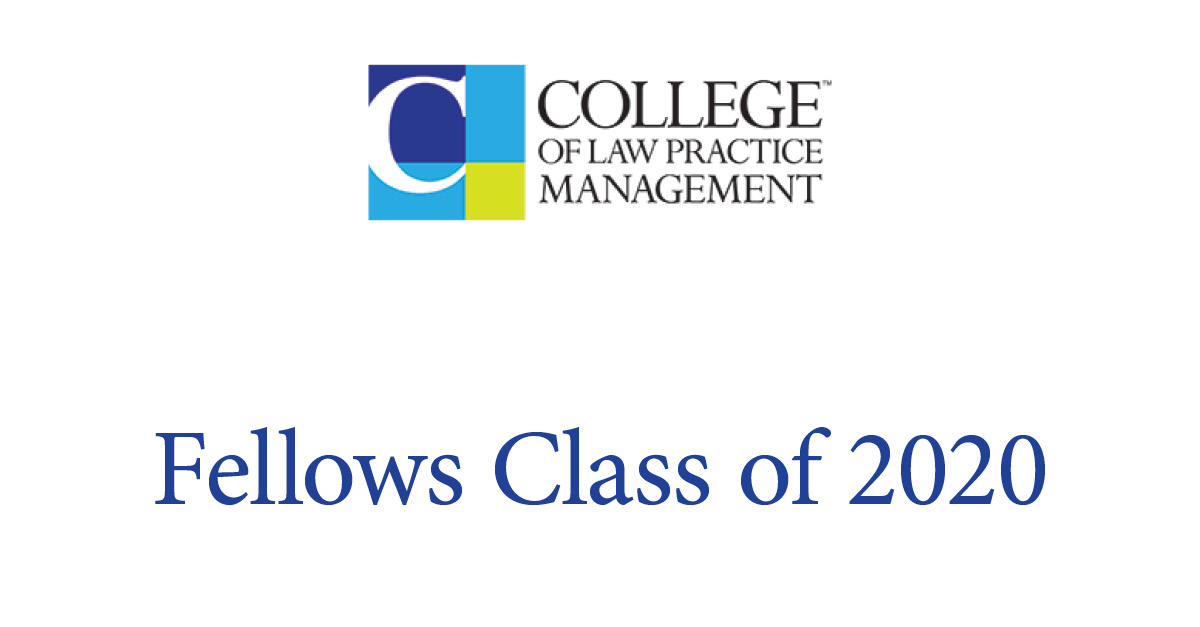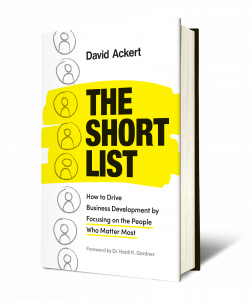 This year I was honored to be inducted as a Fellow into the College of Law Practice Management. The induction ceremonies occurred during the Futures Conference, where dozens of legal industry thought leaders gathered to celebrate and exchange ideas. One of the most salient takeaways for me was expanding on a notion I first heard over the summer from Mohib Qidwai, comparing law firms’ reaction to the economic crisis of 2008 versus their response in 2020. At one of the COLPM Futures Conference breakout sessions, we delved into the comparison.
This year I was honored to be inducted as a Fellow into the College of Law Practice Management. The induction ceremonies occurred during the Futures Conference, where dozens of legal industry thought leaders gathered to celebrate and exchange ideas. One of the most salient takeaways for me was expanding on a notion I first heard over the summer from Mohib Qidwai, comparing law firms’ reaction to the economic crisis of 2008 versus their response in 2020. At one of the COLPM Futures Conference breakout sessions, we delved into the comparison.
During the economic downturn of 2008, our industry was slow to recognize the shift to a client-centric marketplace, and only the most innovative firms at the time pivoted to AFAs and legal project management as a means of demonstrating a commitment to client service. Meanwhile, most firms protected partner comp at all costs, causing financial stressors that eroded culture and internal relationships. Many firms offloaded associates and it was almost two years before they rebuilt their ranks.
On the other hand, this year, firms were quick to adapt, taking a much more egalitarian approach to cost reduction, communicating proactively with clients, and stabilizing operations within a matter of weeks. Lateral hiring increased significantly in Q3 and continues into Q4. Most firms anticipate that they will substantially outperform the doomsday scenarios predicted back in March. A few are enjoying their most profitable year in recent history.
Innovation is impossible without adaptability, and this year, law firms demonstrated that they had evolved compared to the last time they faced an economic crisis.
I asked my fellow 2020 inductees to share some of their takeaways from the innovation and diversity discussions at the Futures Conference. Here’s what they had to say:
Beth Patterson (Director, ESPconnect)
 Innovation starts with your clients – they should drive it. Meet clients where they are and understand the client voice by mapping the relationship. Tie innovation to your top 5 clients, understand the problems they want solved and innovate. One of my favorite takeaways with regards to clients was “one size fits one.”
Innovation starts with your clients – they should drive it. Meet clients where they are and understand the client voice by mapping the relationship. Tie innovation to your top 5 clients, understand the problems they want solved and innovate. One of my favorite takeaways with regards to clients was “one size fits one.”
- Internal engagement is a primary key to success. Innovate through collaboration.
- Recognize different skillsets and diversity of thought and stop saying “non-lawyer”.
- Centralize the innovation concept and federate the implementation.
- Align incentives for innovation with your compensation system. A hot tip is to develop negative incentives for non-adopters!
- Identify and develop champions – find the luddites and get them to talk about tech & innovation.
The Hon Justice Tanya R Kennedy led off this session with excellent words of advice: “Do the work!”. This is great advice for organizations who want to expand their diversity agenda.
- Do a cultural assessment and be transparent with findings.
- Make metrics count towards monetary incentives.
- Exit interviews are fine, but also conduct “stay interviews.”
- Create creative career paths for diverse candidates and develop metrics that count towards monetary incentives.
Gina F. Rubel, Esq. (Founder and CEO, Furia Rubel Communications, Inc)

As a Class of 2020 Fellow of COLPM, I found the Futures 2020 conference invigorating and thought-provoking. It was the most collaborative and welcoming conference, even while virtual, that I have experienced. While I walked away with literally hundreds of take-aways, here are a few on innovation and DE&I that stood out:
- Smart law firms are regularly rethinking how to serve clients, now more than ever.
- There is a fundamental difference between automation and innovation, said Richard Susskind. If you want to make real change, your firm has to be innovative, which means transforming and disrupting the old way of working.
- Diversity is necessary for innovation and true client value.
- Differentiation is going to come down on new ways to collaborate that are less cumbersome, and less expensive.
- We need attorney compensation plans that are transparent, recognize the different types of lawyers in different roles at their firms, and include myriad metrics, not just billable hours and origination. If not, the exodus of women and diverse attorneys will continue, and we’ll never see real equity in law firms.
Marcie Borgal Shunk (President and Founder, The Tilt Institute Inc.)

It is rare that we find ourselves in a virtual room filled with luminaries, thought leaders and entrepreneurs bound by a single mission: to improve and evolve the legal ecosystem. This year’s COLPM conference was my first and was, by far, one of the most engaging, informative and honest forums in which I have participated – a true beacon of light in an otherwise murky 2020. Our small group discussion on diversity and inclusion was ripe with detailed statistics, thanks to Diversity Lab’s Michelle Jackson, and real-life experiences courtesy of Chancellor John Pierre of Southern University Law Center. On the upside, the industry has made progress in the past decade, improving representation of women and minorities at virtually all levels and roles. There was disparity among various groups (e.g., black males showed less progress than others in becoming equity partners) and, clearly, we still have a long way to go to see representation proportionate to the U.S. population. A few of the more useful takeaways:
- Looking at diversity holistically (e.g., gender, race, sexual orientation combined) can mask underrepresentation or bias against certain populations within the diverse group (an astute moment of self-reflection shared by a CEO in our group)
- Targeting recruiting efforts in historically black colleges and other schools with high minority populations can open the door to a larger population of diverse candidates
- The dip in representation from law school grads to BigLaw Associates is stark – and results both from poor integration and cultural belonging cues from large law firms AND personal preferences on the part of students to be part of something meaningful (e.g., setting up shop in their own communities, taking government roles, etc.)
This last point, of course, begs the question – what can law firms be doing to infuse greater meaning, purpose and inclusiveness into their organizational structures and strategy.
Catherine M. Monte (Chief Knowledge and Innovation Officer, Fox Rothschild)

One of the highlights of the COLPM 2020 Futures conference included the importance of prioritizing both Data and Diversity & Inclusion as initiatives in your legal organization.
“Don’t call it innovation call it outcomes” was one suggestion along with the importance of data hygiene.
Accuracy has always been essential for pricing models and client retention rates but now include key metrics with a significant focus on D&I such as:
- Compensation (highlighting disparities amongst gender and race)
- Parity of work assignments (similar to above)
Also emphasized was to always know your “why” – in other words be able to communicate why these data points and analytics will aid attorneys. Teach them about accurate data collection and how to read a report. In a word…metricize!
I also appreciated learning about the “Empty Chair” concept:
Always leave space for an empty chair(s) at the decision table and make it part of your culture ask these questions:
- Who doesn’t have a seat at the table?
- Are we considering client perspectives?
- Is the decision inclusive of diverse and multiple perspectives?
Catherine Krow (Founder & CEO, Digitory Legal)

Data was top-of-mind for most participants, and there was general agreement that firms and legal departments need a data strategy. However, the breakout discussions surfaced two likely prerequisites to executing on that strategy: (1) investment in data hygiene; and (2) investment in change management. It was also telling that many of the innovation and data strategy discussions did not revolve around what technology to use or what data to gather. Instead, the discussions focused on the organizational and cultural challenges associated with adoption and change. On those points, most participants agreed that – at a minimum – successful innovation projects must have executive sponsorship and clear, articulable understanding of what constitutes a “win” for the organization.







